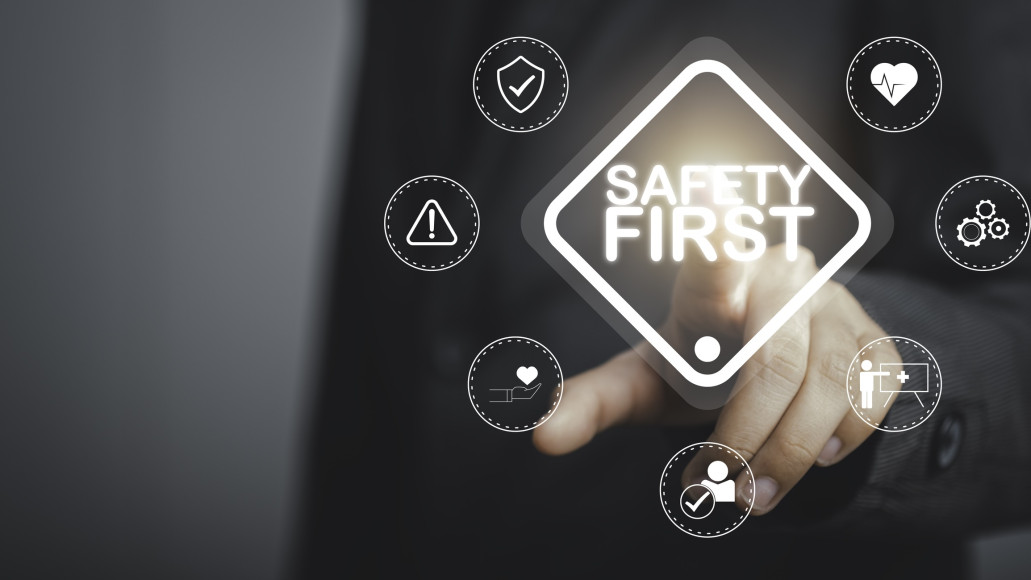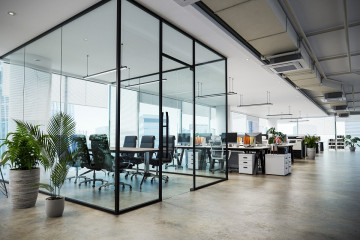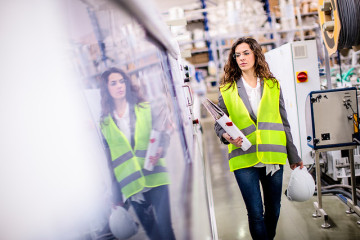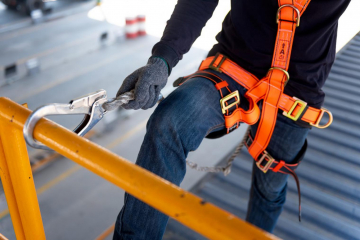Safety in Design (or Design for Safety, Prevention through Design) involves integrating safety principles into every design phase to reduce risks and protect people, equipment, and the environment. Although it's gaining recognition in professional safety circles, few industry professionals have experience with it, and even fewer have integrated it into existing processes. As it becomes pivotal in occupational safety, understanding its significance, benefits, and implementation steps is crucial.
In a recent webinar entitled, “Safety in Design: The Next Frontier in Design Processes,” Rob Dixon, Senior Consultant and Data Center Industry Subsegment Lead at Antea Group moderates while Jill Hauck, CSP and Senior Professional at Antea Group, and Ryan Arnoldi, ASP and EHS Project Manager at Antea Group, discuss Safety in Design and what elements make up a successful Safety in Design program. They also showcase some of the benefits of implementing this practice across industries.
Missed the webinar? Watch here.Where did Safety in Design Start?
Safety in Design is the practice of addressing occupational safety and health hazards during the design phase. Practically speaking, this allows for some of those hazards to be eliminated from the design, or other solutions to be better integrated into the function of the system or building.
As mentioned above, while this philosophy is gaining more traction, is not new. The National Safety Council and the American Society of Safety Professionals (ASSP) were both interested in, and started researching, Prevention Through Design concepts in the mid 1990's. Initiatives and papers were published along the way, and in 2011, the joint ANSI and ASSP standard on Prevention Through Design was published.
It has since been revised and republished in 2021. This standard, while not legally binding, provides a robust guide for developing safety and design programs. It underscores the critical importance of foresight and proactive measures in safeguarding the well-being of workers, users, and the public.
Why Safety in Design Matters
Implementing Safety in Design principles can initially seem difficult, adding complexity and potentially slowing down the engineering process. However, the benefits far outweigh the drawbacks. By addressing hazards early, organizations can prevent injuries, reduce long-term costs, and improve worker morale. For instance, designing facilities with easy access for maintenance reduces the need for risky on-the-fly solutions. Additionally, a safe design can lead to more efficient operations and lower insurance premiums, contributing to a healthier bottom line.
Key Elements of a Safety in Design Program
A successful Safety in Design program includes several critical elements:
- Safety Design Criteria/Specifications: Establishing minimum safety standards that must be integrated into the design from the outset. These criteria serve as the foundation for all subsequent design and construction activities, ensuring that safety is prioritized at every step.
- Design Safety Reviews: Regular reviews of drawings, models, and narratives to identify and mitigate potential hazards. These reviews are integral to catching issues before they materialize on-site, providing an opportunity for corrective action in the planning phase.
- Risk Assessment: Evaluating the various activities and maintenance tasks associated with the facility to foresee and address potential risks. Risk assessments provide a systematic approach to identifying, analyzing, and controlling risks, contributing to a safer design.
- Management of Change: Ensuring that any changes in the design are documented and reviewed by safety professionals to maintain safety standards. This element is crucial for adapting to evolving project requirements without compromising safety.
Application Across Industries
While tech companies with data centers are leading the way, the principles of Safety in Design apply across all industries. From warehouses to office spaces, considering safety during the design phase can prevent a host of issues. For example, in warehouses, designing clear separation between forklift and pedestrian traffic can save lives, while considering ventilation during the design phase can mitigate risks associated with hydrogen gas emissions from charging stations. Additionally, incorporating ergonomic principles into office design can reduce the incidence of repetitive strain injuries, enhancing employee well-being and productivity.
Case Studies and Examples
One notable example is a tech company embedding safety professionals within their design teams for data centers. This integration ensures that safety concerns are addressed from the very beginning, leading to safer, more efficient facilities. Similarly, another client saw a 50% reduction in calculated risk across projects after implementing Safety in Design principles. Additionally, non-industrial workspaces and warehouses benefit from these principles through ergonomic planning, traffic segregation, and proper ventilation, enhancing both safety and productivity. These case studies demonstrate the tangible benefits of a proactive approach to safety, highlighting the positive impact on both safety outcomes and operational efficiency.
Conclusion
Safety in Design is not just a regulatory requirement; it is a philosophy that can lead to significant cost savings and, more importantly, a safer working environment. By integrating safety from the ground up, organizations can create systems and facilities that are not only efficient and functional but also safe for everyone involved. The upfront effort invested in Safety in Design can save money in the long term, all while fostering a culture of safety and resilience.
If your organization is planning an expansion or retrofit, now is the perfect time to integrate Safety in Design principles. Even minor changes can have a significant impact on worker safety and overall project success. Investigate how your organization can incorporate these elements into your processes and business practices. By getting involved early in planned expansions or retrofits, you can make the most impact and ensure that safety is woven into the very fabric of your projects.
Do you have questions about how to implement Safety in Design in your next project? Reach out to our team of experts today!
Want more news and insights like this?
Stay in the loop with our monthly e-newsletter, The New Leaf. We’re here to keep you informed, enlightened, and entertained with the latest in EHS and sustainability. Don’t miss out on the insights and stories that matter to you!✨ Ready to turn over a new leaf? Sign up now!
Have any questions?
Contact us to discuss your environment, health, safety, and sustainability needs today.






